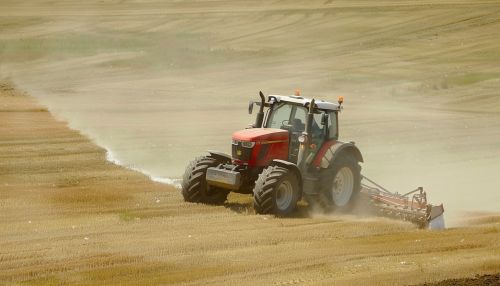Liming (soil)
Introduction
Liming is a common agricultural practice that involves the application of materials containing calcium (Ca) and/or magnesium (Mg) to soil in order to neutralize soil acidity, improve plant health, and increase crop yield. The materials used in liming, often referred to as lime, can be either calcitic (high in Ca) or dolomitic (high in Mg and Ca). The process of liming can significantly alter the chemical properties of soil, making it more conducive to plant growth.


Soil Acidity and Its Effects
Soil acidity is a major constraint to productive agriculture in many parts of the world. It is primarily caused by the leaching of basic cations (Ca, Mg, potassium (K), and sodium (Na)) from the soil profile, leaving behind excess hydrogen (H) and aluminum (Al) ions, which increase soil acidity. Acidic soils can have a detrimental effect on plant health, leading to reduced crop yield. The negative effects of soil acidity on plants include nutrient deficiencies, toxicity of certain elements, and reduced effectiveness of certain pesticides.
The Chemistry of Liming
The primary purpose of liming is to neutralize soil acidity. This is achieved through a chemical reaction between the lime and the acidic components of the soil. When lime is added to soil, it reacts with H ions in the soil solution to form water and Ca or Mg ions. This reaction reduces the concentration of H ions in the soil solution, thereby raising the soil pH. Lime can also react with Al ions in the soil, forming non-toxic compounds and further reducing soil acidity.
Types of Lime
There are several types of lime that can be used in liming, each with different properties and uses. Calcitic lime, also known as agricultural lime, is primarily composed of calcium carbonate (CaCO3). Dolomitic lime contains both calcium carbonate and magnesium carbonate (MgCO3). Hydrated lime, also known as slaked lime, is produced by adding water to quicklime, a process known as slaking. Each type of lime has different neutralizing values, which determine their effectiveness in raising soil pH.
Application of Lime
The application of lime to soil is a relatively straightforward process. Lime can be spread on the surface of the soil using a lime spreader, a machine that distributes the lime evenly over the soil. The lime is then incorporated into the soil through tillage. The rate at which lime should be applied depends on several factors, including the initial soil pH, the target pH, the buffering capacity of the soil, and the neutralizing value of the lime.
Effects of Liming
Liming can have several beneficial effects on soil and plant health. By neutralizing soil acidity, liming can improve nutrient availability, reduce the toxicity of certain elements, and enhance the effectiveness of certain pesticides. Liming can also improve soil structure by promoting the aggregation of soil particles, which can improve water infiltration and reduce soil erosion. However, over-liming can lead to problems such as nutrient imbalances and decreased availability of certain micronutrients.
Environmental Considerations
While liming can have several benefits for soil and plant health, it also has potential environmental impacts. The production of lime involves the release of carbon dioxide (CO2), a greenhouse gas. Additionally, the over-application of lime can lead to the leaching of nitrates into groundwater, which can contribute to water pollution. Therefore, it is important to apply lime at the appropriate rates and to monitor soil pH regularly to avoid over-liming.
